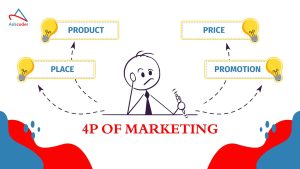
Many of us often wonder, “I want to do business, but what exactly is marketing in a business context? What is marketing?” Doesn’t this question come to your mind too? It keeps circling in mine all the time. But let me clarify right from the start—I’m not teaching you. Let’s just say you and I are doing a group study on “What is Marketing?”
What is Marketing: In general, when we hear the word marketing, we think of it as just promotion. And honestly, I believe promotion is an inseparable part of marketing. Now, if you’re looking for a textbook definition of marketing, my friend, you’ll probably have to enroll in a coaching class. Why? Because textbooks maintain a certain standard in how they present things. So what’s the solution? There is a solution, of course! Those who turn a little knowledge into a useful tool (like using Google Search), explain these concepts in simple language. Why do they explain it in simple terms? Because all of us want to understand things in plain, easy language.
Take, for example, the barber who owns a small shop in the market—he unknowingly follows all the marketing strategies, you’ll learn about once we get into the 4Ps of marketing. His service—haircutting—is his product. At first, he lets people know, “Hey, I cut hair. Come to me, I’ll give you a stylish cut at a low price.” After cutting someone’s hair, he tells them to inform their friends too. Alongside, he spreads the word to people however he can.
I’ve been talking so much for one reason only—to understand what marketing really is, in our own words. In simple terms, marketing is a process through which a brand, business, product, or service is promoted in the market and among people, creating both demand and value.
Marketing is mainly of two types:
Traditional Marketing
Digital Marketing
What is Traditional Marketing? In one line: offline marketing is traditional marketing. Advertising through TV, radio, newspapers, printed flyers, billboards, or loudspeakers—these are all examples of traditional marketing. Traditional marketing doesn’t allow you to specifically target your desired customers. For example, if you advertise an air conditioner on TV, everyone sees it—rich, poor, employed, unemployed, everyone. But think about it, someone like me, who’s broke or unemployed. Will I buy an air conditioner? Of course not! That means your ad is reaching people who aren’t even your target audience. And on top of that, advertising on TV can cost crores of money. That’s why people are now moving toward digital marketing.
What is Digital Marketing? In one line: online advertising is digital marketing. Promoting your product or service through platforms like Google, Facebook, Email, LinkedIn, Instagram, etc., using the internet—that’s digital marketing. With digital marketing, you can show your ad to your targeted audience. Remember the air conditioner example I gave earlier? In traditional marketing, everyone sees the ad—no matter if they can afford it or not. But with digital marketing, it’s different. You can show that ad only to people who are financially capable of buying it. And it costs much less too. How does it work? That brings us to Data Driven Digital Marketing, which I’ll explain shortly.
Now let’s study a bit about the 4P of Marketing. There are many “P” in the marketing world, but the most popular four are:
– Product
– Price
– Placement
– Promotion
Let’s discuss these a little in detail:
1. Product/Service: Remember the barber example I gave? Does he sell a physical product? No. But he provides a service—and that’s also considered a kind of product. Similarly, in your business, the first thing you need to finalize is your product or service. This is the first and most important part of the 4Ps of marketing.
2. Price: After the product comes the pricing. You’ll need to set a price for your product or service. Can you just randomly decide a price? No, you can’t. You have to set the price by considering the quality of your product and comparing it with the prices of your competitors offering similar products.
3. Placement: Placement doesn’t just mean having a physical store or showroom. Placement refers to your product’s availability. For example: you’ve selected your product and its price, but you don’t even have it in stock. What’s the use then? That’s why placement is a major part of the 4Ps of marketing.
4. Promotion: The final and most crucial part of the 4Ps is Promotion. Let’s say you’ve done everything—selected the product, price, and placement—but haven’t informed anyone. You didn’t promote it at all. Then how will people know that you have it or that you’re selling it? So, promotion is a must in marketing.
Data Driven Digital Marketing: Let’s go back a bit to that air conditioner example. I said earlier that if you show ads to people who are actually capable of buying it, your cost will go down, and you’ll get more potential customers. Now imagine your ad reached 10,000 potential buyers. Out of them:
– 100 purchased
-300 checked out
-350 added it to their cart
With Data Driven Digital Marketing, you can retarget those 300 and 350 people who showed interest but didn’t buy yet. What’s the benefit? At least now you’re sure that they’re interested—they just didn’t buy for some reason. So if you show the ad to them again, they might purchase this time. Now you’re advertising to just 650 people instead of 1,000. That means less cost, and more potential buyers. This is the power of Data Driven Digital Marketing.
That’s all for today. We’ll explore a new topic next time, In Sha Allah.
#marketing #marketing4p #marketingstrategy #marketing_strategy
#adscoder
#adscoderit
#adscoder_it
#ads_coder